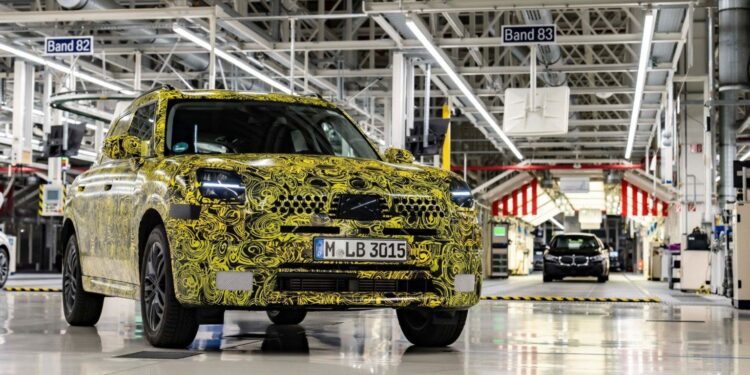MINI, a part of the BMW Group, is known for its iconic designs and cultural appeal. Now, the company is taking its commitment to sustainability and green energy to the next level with the introduction of the first fully electric MINI Countryman. This model will be produced in Germany, making it a true “Made in Germany” model.
The production of the electric MINI Countryman will begin in Leipzig by the end of 2023. BMW Group is investing more than 800 million euros to expand its capacities for e-component production at the Leipzig site by eight production lines by 2024. This expansion is associated with job security and even job growth, with more than 1,000 employees to be employed in E-component production by 2024.
The Leipzig plant is also home to 4 large wind turbines that produce 21.9 GWh of electricity, enough to power 5,000 three-person households in Germany. Additionally, the site has onsite stationary energy storage from 700 former BMW i3 batteries.
The electric MINI Countryman will be an example of sustainable thinking and action, and BMW Group plans to get MINI to 100% electric vehicle sales by 2030. With space-saving components such as the particularly flat high-voltage battery, the MINI Countryman will offer additional space and even greater comfort in the future.
The electric MINI Countryman will be a great way for BMW Group to demonstrate its commitment to sustainability and green energy. It will also be a great way for MINI to attract new buyers and continue to be a leader in the auto market.
FAQ
Q1. How electric car batteries work?
A1. Electric car batteries are typically lithium-ion batteries that store energy and power the motor. They are recharged by plugging the car into an electric outlet or charging station.
Q2. What electric car has the longest range?
A2. The Tesla Model S has the longest range of any electric car currently on the market, with a range of up to 370 miles on a single charge.
Q3. How electric car batteries are recycled?
A3. Electric car batteries are recycled by breaking them down into their component parts and then separating out the metals, plastics, and other materials for reuse. The metals are melted down and reused in new products, while the plastics and other materials are recycled into new products.







